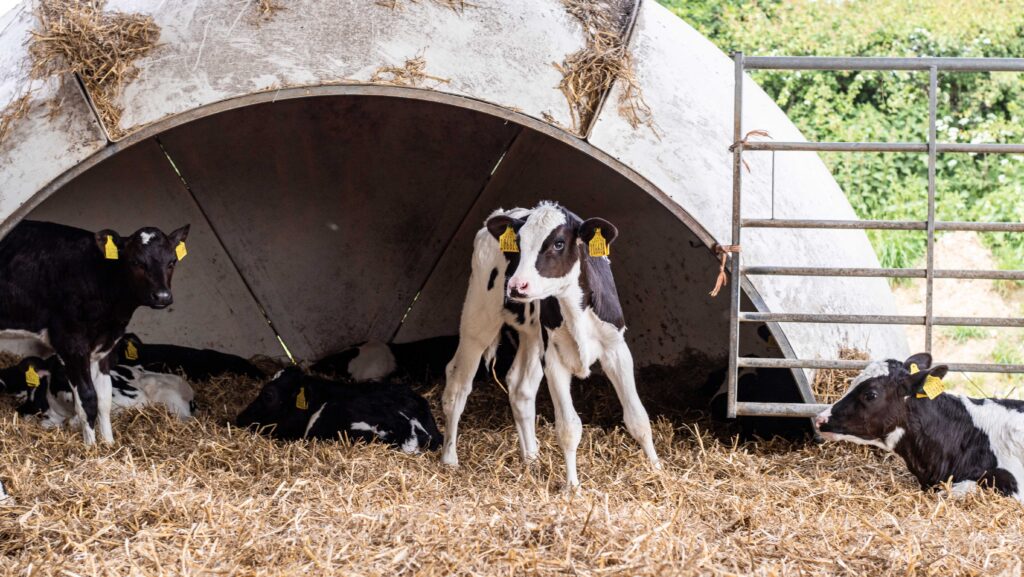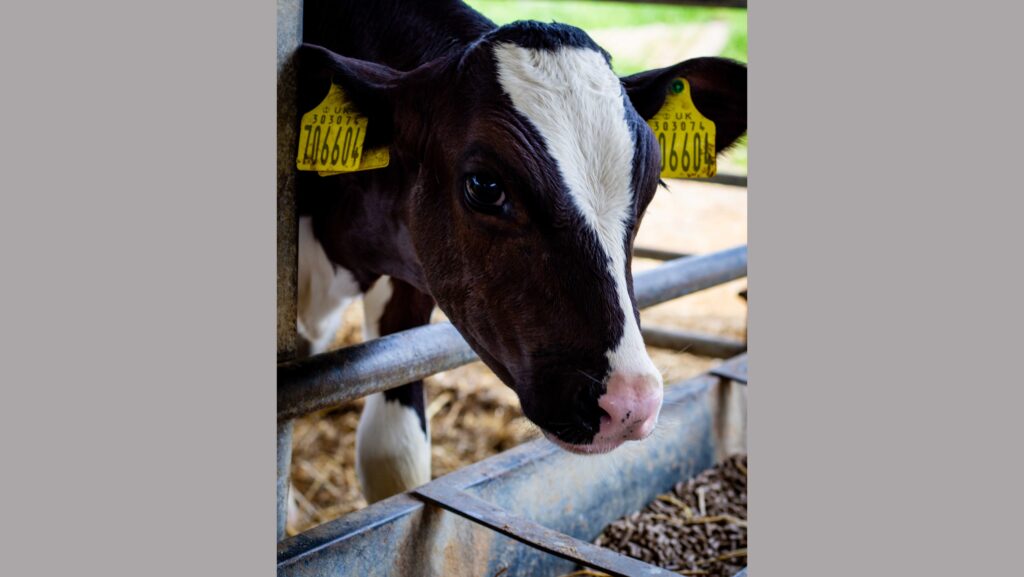5 early-life heifer nutrition tips to drive milk production
 © Rhian Price
© Rhian Price Following basic principles of good colostrum management and feeding elevated levels of milk could pay dividends for herd performance.
Dairy heifers fed the correct amount of good-quality colostrum at the right time produce more milk in their first and second lactation and are 16% more likely to survive to the end of their second lactation.
See also: Advice on grazing management for dairy heifers
This is according to Dr Adam Geiger from animal health company Zinpro. He offers the following tips for early-life nutrition.
Colostrum quality drives quantity
The target level of immunoglobulins (IgG) in colostrum is 50g/litre. A calf does not have a requirement for volume of colostrum but for a total of 150-200g of IgG. If colostrum is of poorer quality, calves need more of it.
“Quality drives quantity. That’s where the [standard] recommendation for 4 litres comes from, assuming it [Brix refractometer reading] is around 23%,” says Adam. “It also gives us wriggle room for delayed feeding or bacteria contamination.”
Feed colostrum quickly
Speed of the first feed of colostrum is imperative because the calf can absorb 50% of IgG present in the colostrum at birth.
Within four hours, this falls to 25-30%, which is why the target should be to feed calves within two hours of birth.

© Rhian Price
Keep colostrum clean
Colostrum should contain less than 100,000 coliform bacteria/ml, yet research has shown that only 55% hits this all-important target, with 45% containing more than one million.
The number-one cause of bacterial contamination is poorly cleaned feeding equipment. To avoid this, feeding equipment must be washed with hot water first to avoid baking on fat and bacteria with cold water. Equipment should be dried thoroughly, too, Adam adds.
Feed more milk
Research shows that each 100g improvement in average daily gain within the first two to three months of life can increase first lactation milk yields by 200-225 litres.
Elevated levels of milk also promote development of the mammary gland.
The first 60-90 days is the only time udder growth is positively correlated to body weight.
Farmers should feed at least 8 litres of milk for the first 60 days and adhere to a two-step weaning programme over 10 days.
The first reduction in milk should be a “decently aggressive” 25-30% of total milk intake to send the message to the calf that milk has gone away.
The second reduction should total 25-35% before milk is removed completely.
Avoid overfeeding forage
Rumen development is not dependent on forage intakes but on the fermentation of carbohydrates from cereal grains.
“Forage will help muscular development, but that’s not nearly as important as the development of rumen papillae,” explains Adam.
The fermentation of grains produces propionic and butyric acids, which fuel the growth of rumen papillae. And feeding too much forage can limit grain intake.
“A calf can only consume 1% of its bodyweight in fibre. If fibre content is too high or forage is preferred, we will limit growth and rumen development,” he adds.
If calf starter contains a percentage of neutral detergent fibre in the upper 20s, there may be no need to feed additional forage. However, this is dependent on the total diet fed, including milk.
Calves should be offered concentrates from day one and must be eating a minimum of 3kg a head a day for three to five days prior to weaning.
Dr Adam Geiger was speaking at the recent Wynnstay Calf and Youngstock event at Wheatlands Farm in Pershore, Worcestershire
